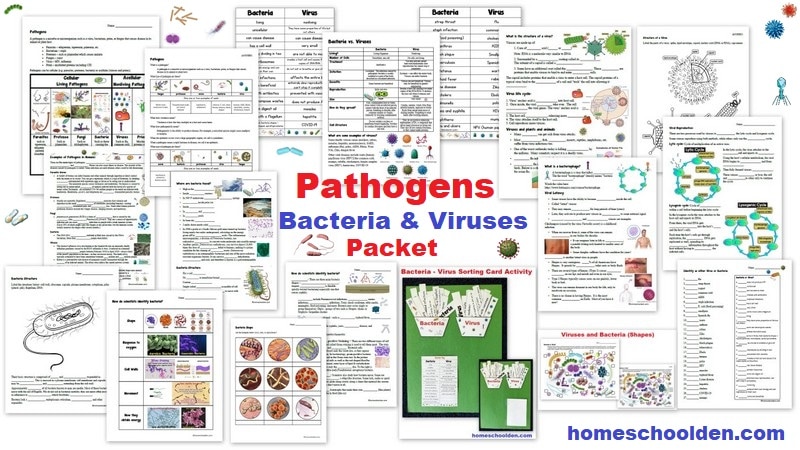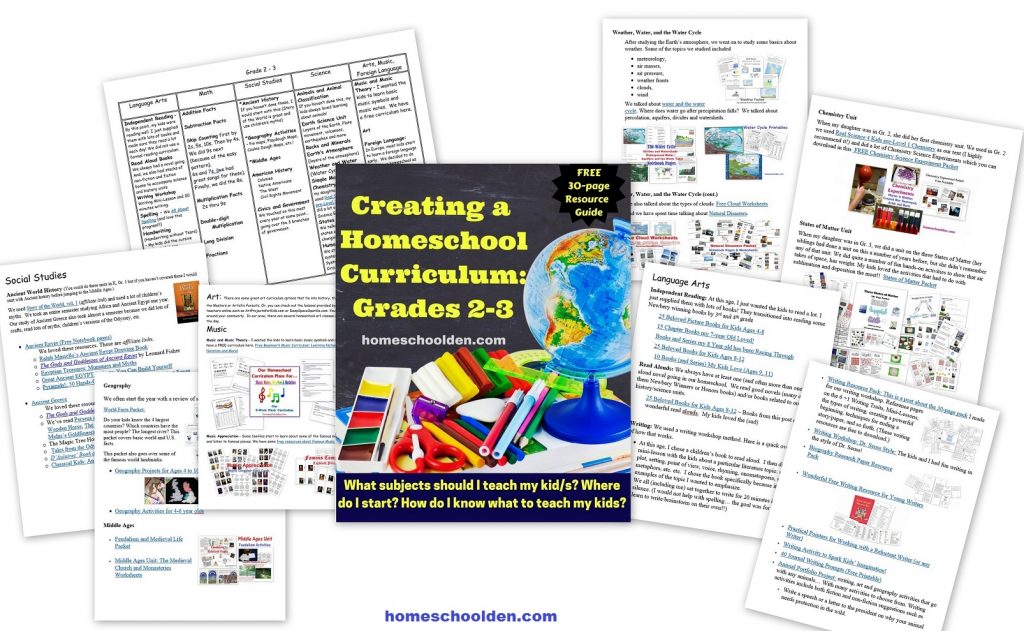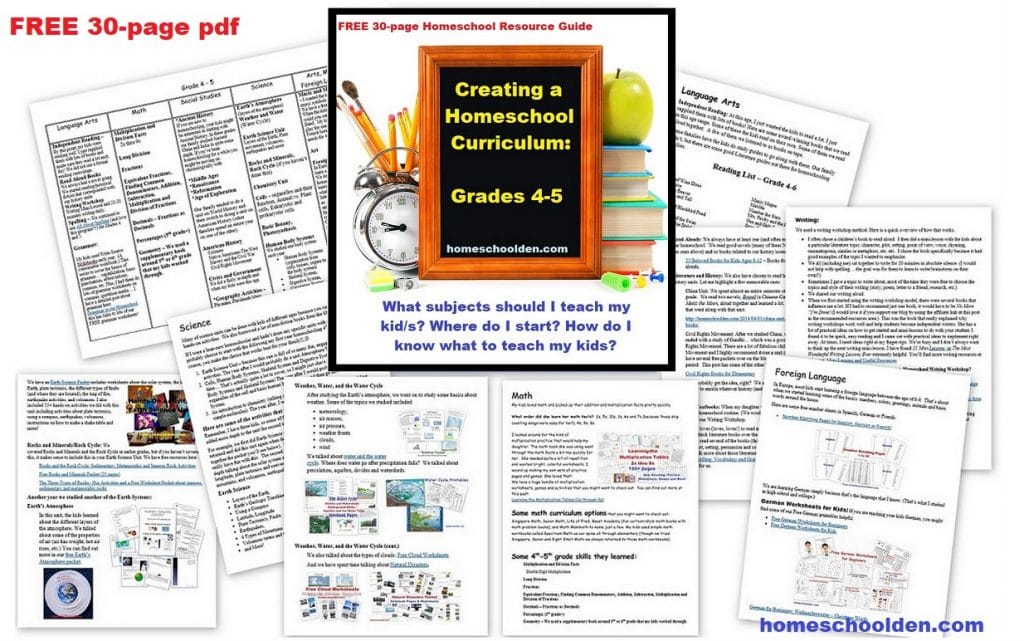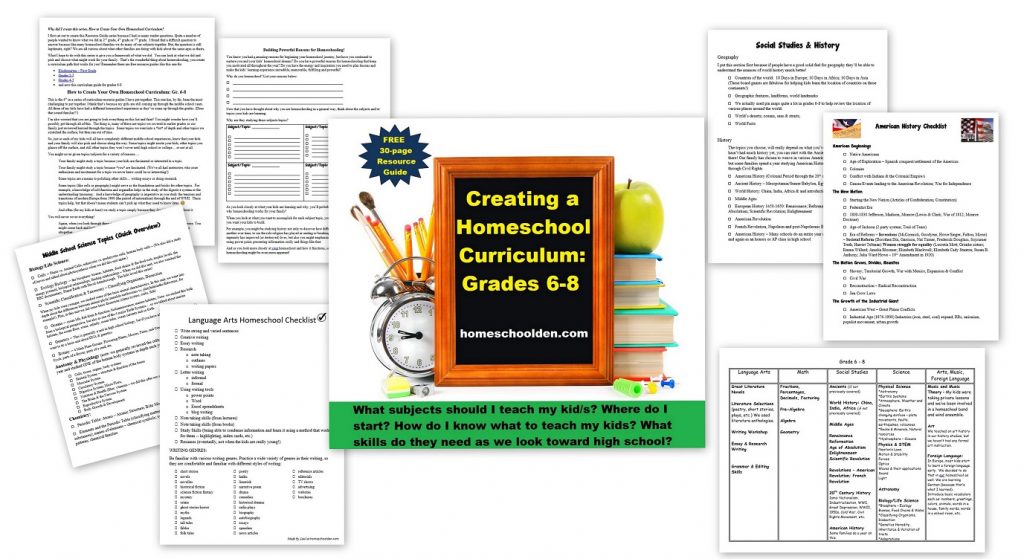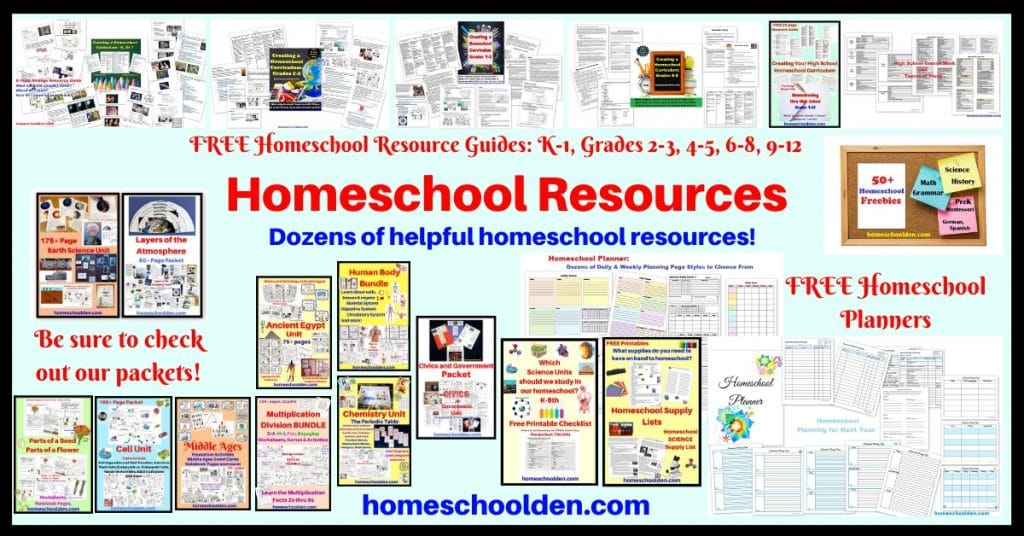Homeschooling Grade 8 and High School
We are into our second, third (fourth! I can’t seem to get this post finished!) official week of homeschooling for the new academic year. My youngest daughter is in 8th grade and my two older are in high school. Most every year, I write about our current plans and I’m going to share some of the topics, units and resources we are using this year.
Down at the bottom I will link to the (MANY!) posts I’ve written in previous years so you can check out what they were doing in 1st or 5th or 6th grade (and what have you!). For example, we started the year with these fun chemistry experiments a couple of years ago! I think I will start with science before going on to history & geography, language arts, and then math. 🙂
I think I will start with science before going on to history & geography, language arts, and then math. 🙂
Science:
Biology Unit: My 8th grader, ED, is starting off the year with unit on biology. We started off by talking about ecosystems and biomes. We went over some of the basic vocabulary (individuals, populations, communities, ecosystems vs. biomes, etc.), watched a couple of videos and talked about the biotic and abiotic factors that can affect an ecosystem (or biome). Here are some of the pages ED has filled out and worked through so far. (You can check out our Biology Unit here.)
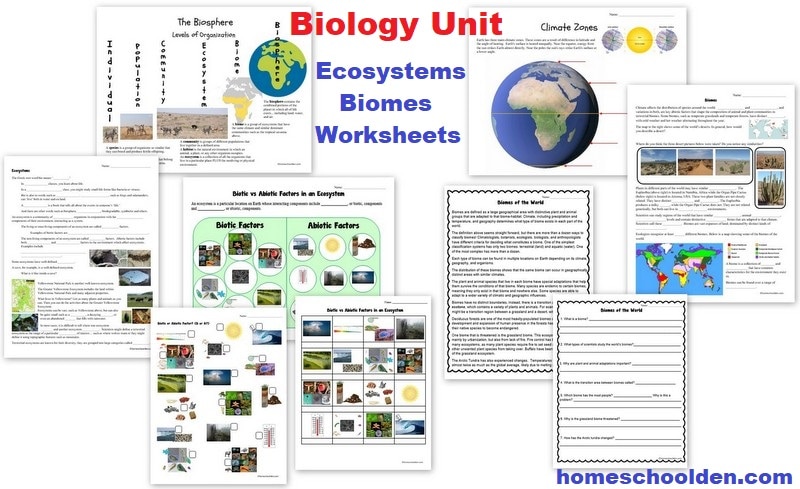 Not surprisingly (for us!) we have strayed a tad bit, bringing in bits and pieces from other units! For example, on the ecosystems page, we read that “Scientists can study regions of the world that have similar topography, annual temperatures, precipitation levels and contain distinctive plant forms that are adapted to that climate.” I asked her if she remembered what a topographic map was – and she wasn’t sure. So, I printed out pages from the World Facts Packet to examine a topographic map and also printed out the fun activity that you see below! 🙂 She was so excited when the play dough came out (not a common occurrence in our home anymore, but everyone enjoyed playing with it after the activity was over. Haha!!)
Not surprisingly (for us!) we have strayed a tad bit, bringing in bits and pieces from other units! For example, on the ecosystems page, we read that “Scientists can study regions of the world that have similar topography, annual temperatures, precipitation levels and contain distinctive plant forms that are adapted to that climate.” I asked her if she remembered what a topographic map was – and she wasn’t sure. So, I printed out pages from the World Facts Packet to examine a topographic map and also printed out the fun activity that you see below! 🙂 She was so excited when the play dough came out (not a common occurrence in our home anymore, but everyone enjoyed playing with it after the activity was over. Haha!!)
 As we have begun talking about the biomes, we also brought out the Deserts of the World materials (also from the World Facts Packet). And while I was printing those pages I added in the geography term pages as well to review words like atoll, lagoon, peninsula, bay and gulf.
As we have begun talking about the biomes, we also brought out the Deserts of the World materials (also from the World Facts Packet). And while I was printing those pages I added in the geography term pages as well to review words like atoll, lagoon, peninsula, bay and gulf.
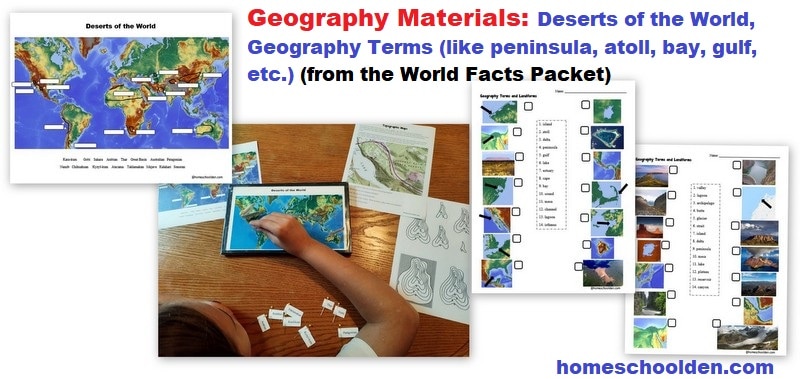 And while ED (and her sister!) are reviewing some of the deserts of the world, ED started working on (and coloring in) the biomes map (note the deserts of the world pin map you see below is in the World Facts Packet.):
And while ED (and her sister!) are reviewing some of the deserts of the world, ED started working on (and coloring in) the biomes map (note the deserts of the world pin map you see below is in the World Facts Packet.):
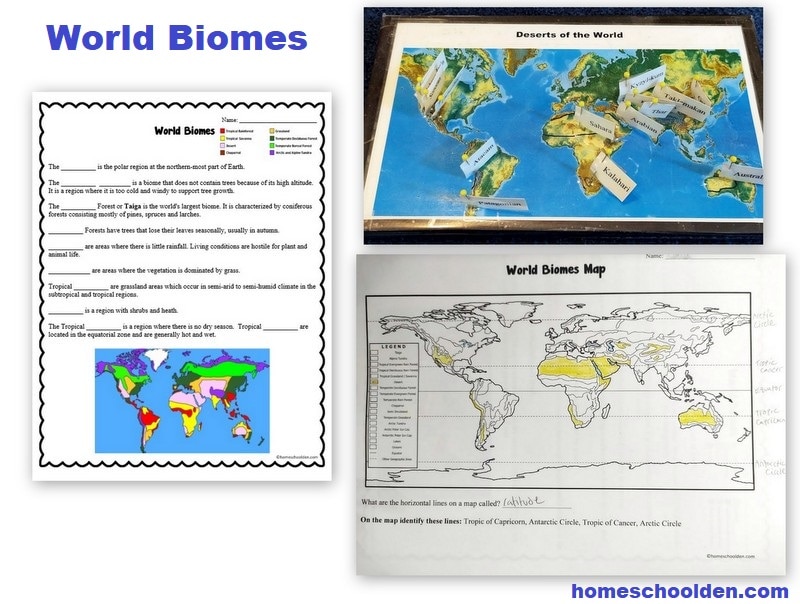
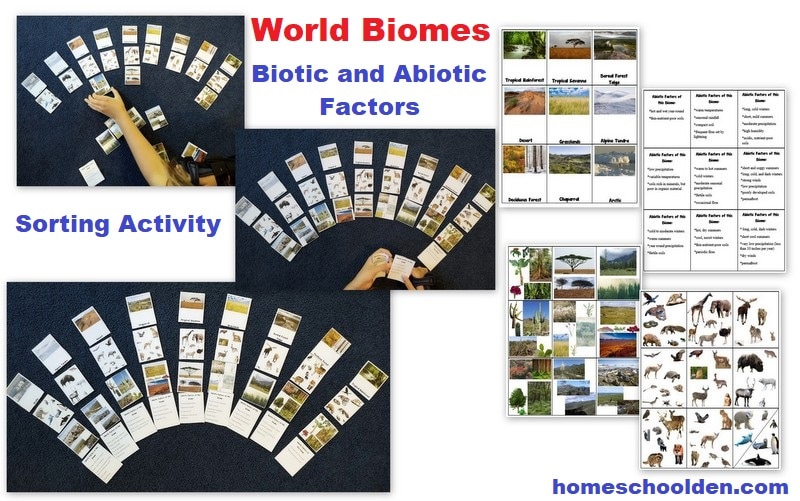 Anyway, that’s what we’ve been up to the first couple of weeks back. ED has been working on a biomes research project. We’ve also moved on to food webs, energy transfer and trophic levels. After we finish this unit, we’ll be moving on to a new unit that I created this summer on Pathogens! That packet will be coming soon!
Anyway, that’s what we’ve been up to the first couple of weeks back. ED has been working on a biomes research project. We’ve also moved on to food webs, energy transfer and trophic levels. After we finish this unit, we’ll be moving on to a new unit that I created this summer on Pathogens! That packet will be coming soon!
Organic Chemistry Unit: My older two kids are doing a unit on Organic Chemistry. We hadn’t gotten to this last year when we did high school chemistry and DD has about six weeks until her intensive physics class starts. We’re doing this unit until then.

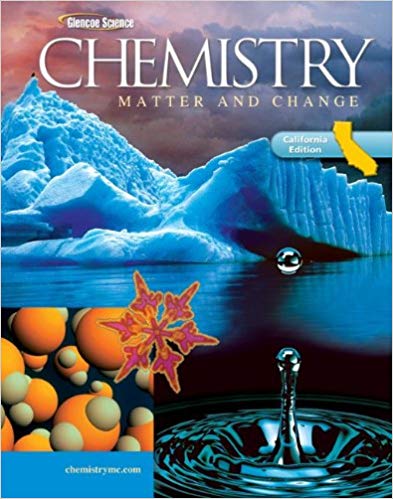 We have still been using the Glencoe Chemistry textbook (affiliate link) and really like this book. This is the book we’ve used for all of high school chemistry. We started with some basic review and then moved on to the text. This past week we’ve been having fun naming different alkanes, alkenes and alkynes. Sounds complicated, but the book explains it well and we feel smart coming up with names like 3-ethyl-4-methyl-4-isopropylheptane. Looks crazy hard, but there’s a pattern to it makes it straight forward.
We have still been using the Glencoe Chemistry textbook (affiliate link) and really like this book. This is the book we’ve used for all of high school chemistry. We started with some basic review and then moved on to the text. This past week we’ve been having fun naming different alkanes, alkenes and alkynes. Sounds complicated, but the book explains it well and we feel smart coming up with names like 3-ethyl-4-methyl-4-isopropylheptane. Looks crazy hard, but there’s a pattern to it makes it straight forward.
I have a lot of (high school) chemistry materials I’ve made for the kids in the past couple of years and had hoped to polish those up to share with you all… with surgery, a new puppy, and family get togethers it didn’t happen, but it’s still on my to-do list!
History
 As I mentioned above, we often start the year with a review of world facts (largest countries, biggest cities, longest rivers and so forth). This year we also reviewed some of the deserts of the world (ED was talking about the world biomes, so it fit right in!).
As I mentioned above, we often start the year with a review of world facts (largest countries, biggest cities, longest rivers and so forth). This year we also reviewed some of the deserts of the world (ED was talking about the world biomes, so it fit right in!).
We will often talk about current events as well. With everything that was happening in Afghanistan back in August, we spent time on the Middle East. I had added in some current events pages to our World Leaders & Types of Government Packet (that packet is currently free and can be found here!) and we went over that. We spent time on the geography of the Middle East learning both the locations of these countries and also their capitals. Each day we spent a few minutes reviewing the countries of the Middle East and also started a novel (true story) about the realities of life in Afghanistan for one family called The Bookseller of Kabul. It tells the story of one man and his family just after the fall of the Taliban after 9/11.
 Meanwhile, we jumped back into our history studies. Last year, we had left off in the middle of the Roman Empire. We got up to about about the year 200 (just after Emperor Commodus). This year, we are starting with the fall of the Roman Empire, the barbarian invasions, and the division of the empire. The kids had to do a compare-contrast history essay on Constantine and one of the emperors we studied last year. (That’s why you’ll see so much about essay writing in this next section on language arts!)
Meanwhile, we jumped back into our history studies. Last year, we had left off in the middle of the Roman Empire. We got up to about about the year 200 (just after Emperor Commodus). This year, we are starting with the fall of the Roman Empire, the barbarian invasions, and the division of the empire. The kids had to do a compare-contrast history essay on Constantine and one of the emperors we studied last year. (That’s why you’ll see so much about essay writing in this next section on language arts!)
Language Arts – Reading, Writing, Vocabulary, etc.
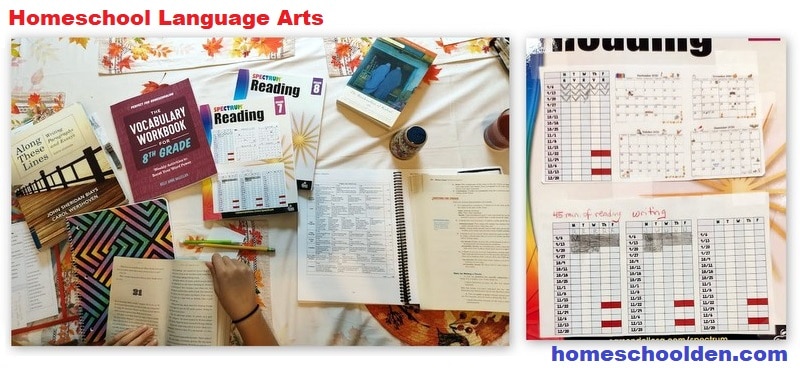 My 8th grader is using a number of different workbooks and resources this year. I happened to take a picture a week ago or so when ED had most of the resources she is using on the table. The links below are affiliate links.
My 8th grader is using a number of different workbooks and resources this year. I happened to take a picture a week ago or so when ED had most of the resources she is using on the table. The links below are affiliate links.
- Reading Comprehension (I got both grade 7 and grade 8 for this year)
- Vocabulary (ED said this was a good level for her, some of the words presented are new)
- Writing Essentials (workbook only)
- Along These Lines: Writing Paragraphs and Essays
For the first time, we are using some Reading Comprehension books to help her work on her reading speed/comprehension skills. We also picked up a new vocabulary book for her. She alternates between these two books doing reading comprehension M/W/F and vocabulary T/Th. She spends about 10-15 minutes on this.
For writing she still has free reign and often chooses to do free writing. But I also purchased Writing Essentials. I purchased the 10th grade version (from Rainbow Resource) so the kids can all refer to it. I purchased just the text (not the other resources. It has guidance on how to write a solid, strong paragraph (or essay) in the main forms:
- Expository Writing
- Compare/Contrast
- Persuasive
- etc.
Writing Essentials also provides writing prompt choices. I was specifically looking for writing curriculum that had some. This works well for us.
Essay Writing Resource Books: A few years ago, I also purchased Along These Lines: Writing Paragraphs and Essays. This has been a wonderful resource for middle school and high school in our homeschool. The explanations are well written. Again, it covers the main types of essay writing styles. We read through this book’s chapter on compare/contrast essays as my kids started working on their history assignment.
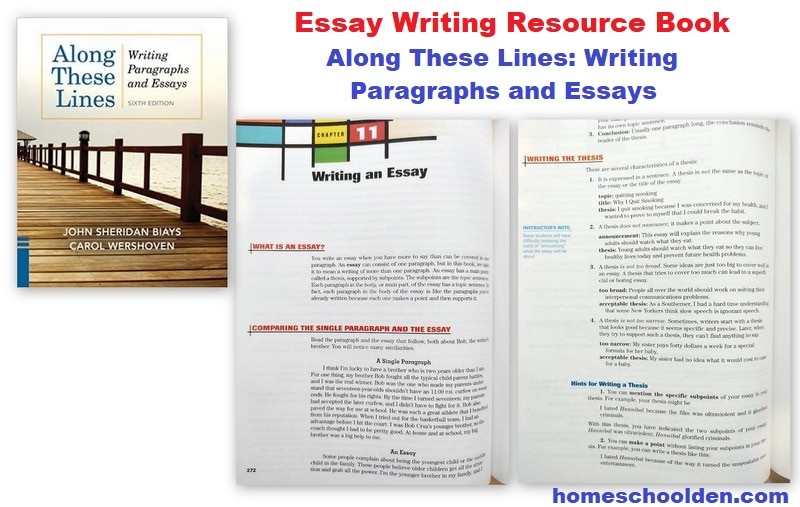
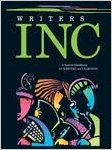 We have used that and Writers Inc pretty regularly in our homeschool! We’ve found the grammar section at the back of Writers Inc to be especially helpful as a reference.
We have used that and Writers Inc pretty regularly in our homeschool! We’ve found the grammar section at the back of Writers Inc to be especially helpful as a reference.
My older daughter (age 15) has been taking a couple of essay writing classes from Bravewriter. She took two 4-week classes that started in August and will do the third 4-week class starting next Monday. (She doubled up on those two classes because she’ll have an intensive physics class that starts towards the end of October.) The classes she took a part of a series of three (see below). They are asynchronous so she could/can work when she had/has time, but has a teacher that gives feedback. She thought the classes were extremely helpful and she said she was . It looks like the classes are now full, but they will open new classes for the spring semester if you are interested. I asked my daughter if she recommended one before the other and she said she liked them both and felt they were both helpful. The links below are not affiliate links; we since she felt that she got a lot out of the two she has taken so far, I wanted to mention them to you! I’ll probably have my youngest take them in the next couple of years (she really enjoys free writing at the moment).
- Essay Prep: Research and Citation
- Essay Prep: Reading the Essay
- Essay Prep: Dynamic Thinking (starts Oct. 4th)
Math
8th Grade: Algebra & Geometry
My 8th grader is working on both algebra and geometry this year (yes, we decided we would work on both… splitting her math time into two). Here’s why….
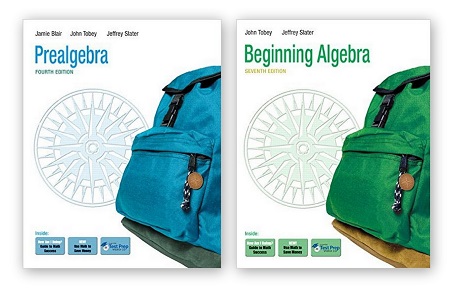 My daughter started Algebra at some point last year after finishing her Prealgebra (4th Edition) (affiliate link) book. All three of my kids used the math textbooks by Toby and Slater for PreAlgebra and Beginning Algebra (ie. Algebra I). I purchased the old versions used on Amazon. I have the teacher’s edition for the Beginning Algebra book, but rarely use it because I helped them with problems when they got stuck. These books have very clear examples and practice problems and then entire sections of problems for the students to work through.
My daughter started Algebra at some point last year after finishing her Prealgebra (4th Edition) (affiliate link) book. All three of my kids used the math textbooks by Toby and Slater for PreAlgebra and Beginning Algebra (ie. Algebra I). I purchased the old versions used on Amazon. I have the teacher’s edition for the Beginning Algebra book, but rarely use it because I helped them with problems when they got stuck. These books have very clear examples and practice problems and then entire sections of problems for the students to work through.
ED is about 2/3 of the way through the Algebra text, but I can tell she needs more polish and more practice on some of the topics she covered last semester (factoring, division of polynomials and simplifying radical expressions). We decided that we would divide her math hour into two parts. She works through Algebra problems that I’ve marked out for her for about 25 minutes and then uses the remaining time to work on Geometry.
Note: My nephew is also homeschooling and my Sis-in-law decided to use Thinkwell’s preAlgebra. I’ll let you know how they like it!
For Geometry (Algebra II/Trig, PreCalc and Calculus), we have used Thinkwell’s math courses with Professor Burger. (If you are interested you can get 15% off through my referral link: Thinkwell 15% off: http://thinkwellhomeschoo.refr.cc/lieslm) He spends about 3-7 minutes explaining a topic and doing an example problem or two. Then, the student can go to their text and do the example problem that goes with that lecture. We purchased the $49 book of problems that go along with the Thinkwell’s Geometry course. You can print those problems out (or just view them online), but my kids like working on problems on paper/in their book.
Side note: We got into the habit of splitting math time and math topics with my older two in Algebra II. They would work on algebra-related topics for half our math time and then would work on logarithms (and later into the year, trig & trig functions and then conic sections) for the other half of math time. That worked out better for us/them.
High School Math:
My daughter is doing PreCalc but we are using Thinkwell’s Algebra II and the PreCalc class (so we have subscriptions to both classes).
Meanwhile my son is doing Thinkwell’s calculus, but is simultaneously doing the trig chapters in Thinkwell’s PreCalc class. At the end of last year, my son did the limits on Khan Academy and found it really helpful/easy to follow (intro on limits is here, estimating limits is here). Khan Academy is of course, a free resource. A note about Thinkwell’s calculus course – they don’t have the practice problems available. I wound up printing out the multiple choice practice sets, but it was a bit time consuming. Still, my son and I are happy with the course so far. Again, this is my referral code for Thinkwell 15% off.
SAT Math Prep: My high schoolers have used Khan Academy to study for the math portion of the SATs. (Khan Academy is free to use.) My kids like the practice problems and explanations and have found Khan Academy to be extremely helpful. We also have a couple of other SAT study guide books that they’ve been reading through, but they’ve spent more time on Khan Academy overall than with the books. I made a checklist of all the videos/practice problems and they checked them off as they went. They also created study cards to go highlight some of the ‘things to remember’ from their practice sessions. Anyway, I just thought I’d mention how my kids were studying for that since that’s been a big topic of conversation in our home the past year or so!
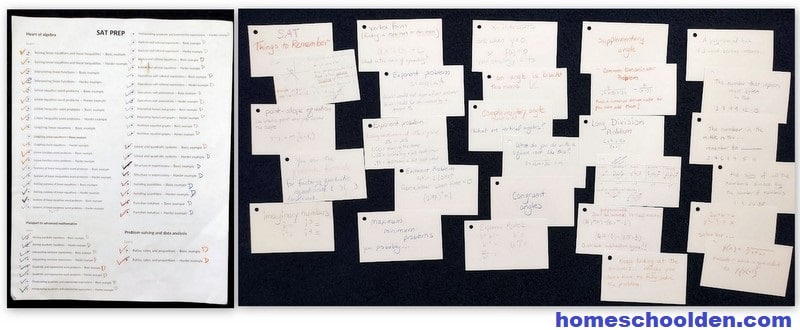 P.S.-Recently I wrote this post 10 Things I Have Learned Teaching High School Math in our Homeschool if you are interested.
P.S.-Recently I wrote this post 10 Things I Have Learned Teaching High School Math in our Homeschool if you are interested.
Foreign Language:
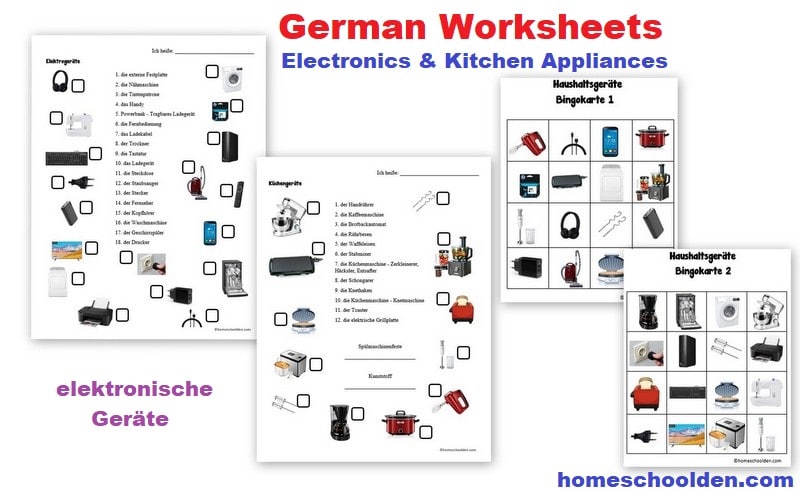 We are continuing to study German. The kids have lessons twice a week with a native German speaker (they are reading a novel together). Plus, we work on vocabulary units. For example, recently we have been working on electronics and kitchen appliances – elektronische Geräte (and reviewing that vocabulary with many rounds of bingo!). The kids have also been working through a German grammar course online that we purchased from Udemy. DD has decided she would like to do a high school abroad program in German and is applying for a scholarship for that (for next year). She’s now conversationally fluent in German, especially after her month-long German immersion camp at Waldsee (Concordia Language Villages) this past summer in Minnesota.
We are continuing to study German. The kids have lessons twice a week with a native German speaker (they are reading a novel together). Plus, we work on vocabulary units. For example, recently we have been working on electronics and kitchen appliances – elektronische Geräte (and reviewing that vocabulary with many rounds of bingo!). The kids have also been working through a German grammar course online that we purchased from Udemy. DD has decided she would like to do a high school abroad program in German and is applying for a scholarship for that (for next year). She’s now conversationally fluent in German, especially after her month-long German immersion camp at Waldsee (Concordia Language Villages) this past summer in Minnesota.
Meanwhile, the girls are still studying Spanish as well! They have online lessons a couple of times a week for that.
Sports, Music, Scouts, Volunteering & Other Activities – We keep busy with lots of other activities too. ED is on the travel soccer team. The girls play the flute and French horn and have private lessons and play in a couple of different music groups. With that and other things, life is certainly busy!
As for me… I am still playing the oboe and our community band has managed to play together through most of the spring and summer. We’ve been rehearsing outside. I also will be joining a woodwind quintet in October and am very excited about that!
Life on here on the blog has been extremely busy behind the scenes. I have several new packets in the works. I mentioned above that I have a new science unit coming out on Pathogens: Bacteria and Viruses.
I also have been polishing the Cold War Packet. You can expect a new post about that fairly soon – sometime in early October 2021 (though if you are working on it now, feel free to email me and I can get it to you now… it is currently 50% off because I am still adding in a few more things and am working on proofing).
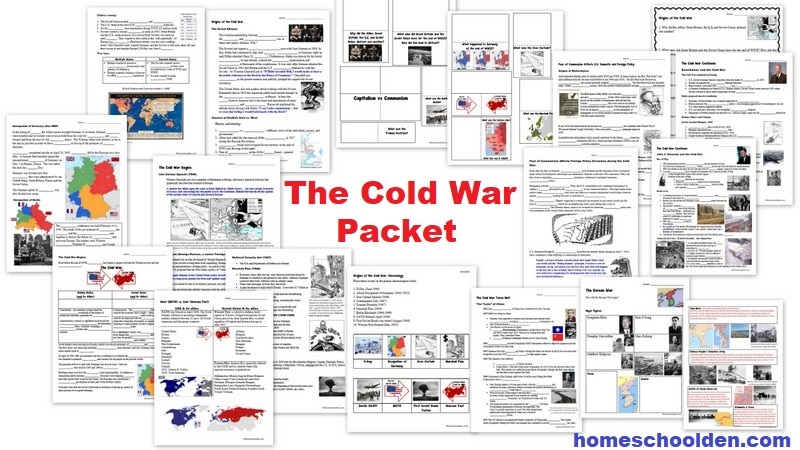 The Cold War Packet is (currently) 70-pages and covers:
The Cold War Packet is (currently) 70-pages and covers:
- Origins of the Cold War
- Occupation of Germany
- The Cold War Begins (Containment, Truman Doctrine, Berlin Airlift)
- The Cold War Turns Hot
- Korean War
- The Cold War during the Eisenhower and Kennedy Administrations
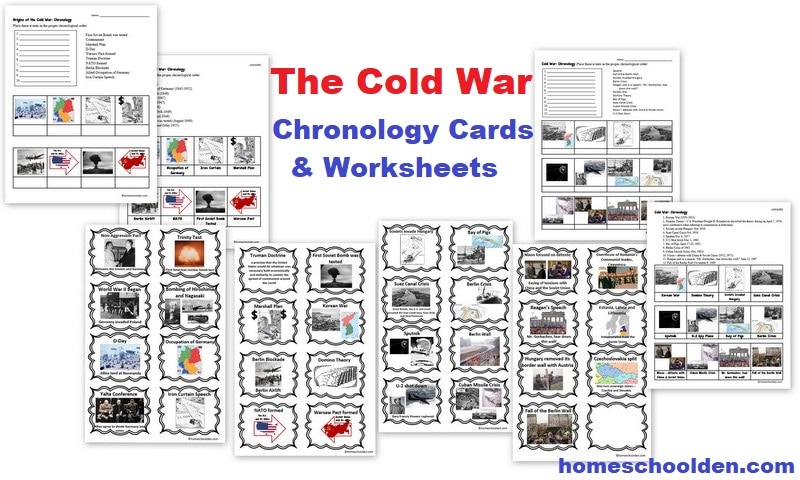 So, I think that about wraps things up… except… did I tell you we got a new puppy this summer?! It’s a long story, but a friend had purchased him and then had a death in the family and couldn’t keep him. As you can imagine, that adds in a lot of excitement and energy to the household! Because of the new puppy, Loki, we have a pretty structured morning. More about that another time. I’ll put in a few pictures before I go! His ears look so funny now! 😊
So, I think that about wraps things up… except… did I tell you we got a new puppy this summer?! It’s a long story, but a friend had purchased him and then had a death in the family and couldn’t keep him. As you can imagine, that adds in a lot of excitement and energy to the household! Because of the new puppy, Loki, we have a pretty structured morning. More about that another time. I’ll put in a few pictures before I go! His ears look so funny now! 😊
 Happy Homeschooling! Hope your life is as full and fulfilling as ours!
Happy Homeschooling! Hope your life is as full and fulfilling as ours!
~Liesl and the Kids
You might also be interested in these posts:
- Homeschool Kindergarten and Grade 1
- Our Homeschool Curriculum for Grade K, 3 and 5
- Our Homeschool Curriculum (Grades 2 and 4)
- What We’ve Been Up to Lately (Grades 1, 4, 6)
- What Happens in a Homeschool Day? Our Week (or 2) in Review (K, Grade 3, Grade 5)
- Our Homeschool Week (Grades 3 and 5)
- Science Year in Review – 6th Grade
- Science Year in Review – Grades 7, 5, 2
- Science Year in Review – Grades 8, 6, 3)
- Homeschool Science Year in Review (Grades 9, 7, 4)
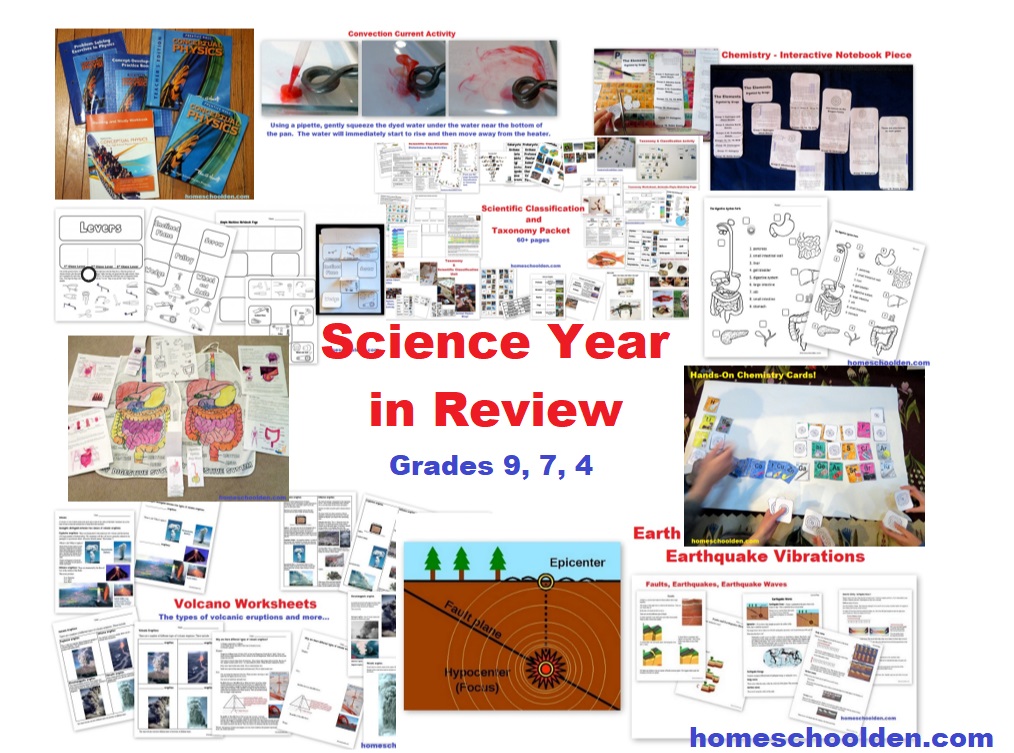
Creating Your Own Homeschool Curriculum: These are some resources I made that might be helpful as you create your own homeschool plans. These are somewhere between 30 and 50 pages and are FREE to download :
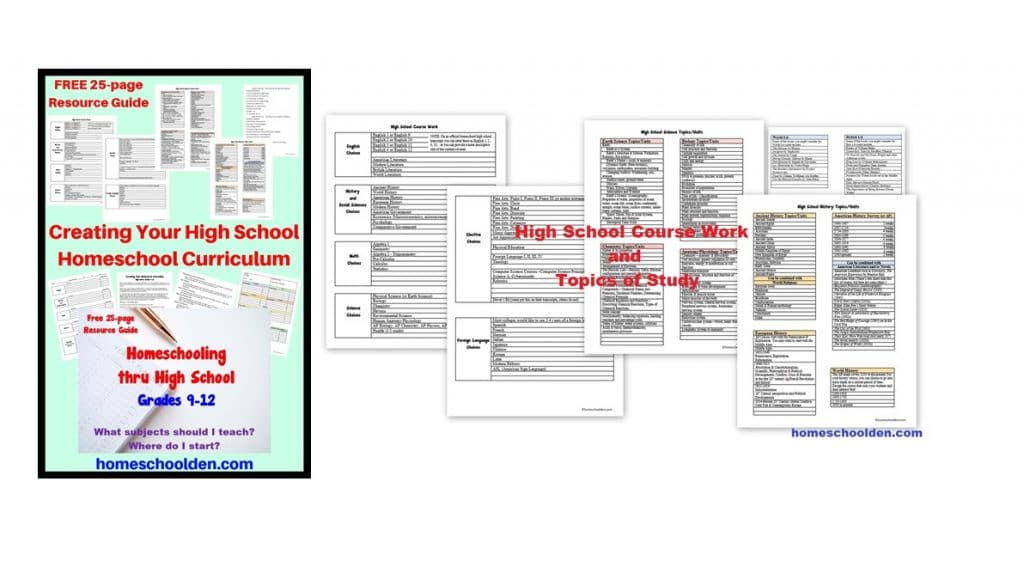 I have a post called Homeschool Resources that will help you find many of the resources we have on the blog. In addition to the various packets we have in the Store area, we have TONS of FREE printables. The Resource Page has a huge list of those. 🙂
I have a post called Homeschool Resources that will help you find many of the resources we have on the blog. In addition to the various packets we have in the Store area, we have TONS of FREE printables. The Resource Page has a huge list of those. 🙂
FREE Science Checklist for Elementary and Middle School –— These were the science units and topics hoped to cover from Kindergarten through Grade 8 (ages 5 to 14 or so)
Homeschool Science Unit Checklist for Elementary and Middle School (free printable)
I’m here for you if you have questions, comments or just want to say hi. Feel free to email me… Liesl@homeschoolden.com
See you again soon here or over at our Homeschool Den Facebook Page! You might also want to check out some of our resources pages above (such as our Science, Language Arts, or History Units Resource Pages) which have links to dozens of posts. You might want to join our free Homeschool Den Chat Facebook group. Don’t forget to check out Our Store as well. ![]()
 Again, if you are interested in joining our Homeschool Den Newsletter, feel free to subscribe here. The Welcome Series includes 5 packed emails… with tips on homeschooling, keeping motivated, finding various resources and freebies tucked away on the blog and more!
Again, if you are interested in joining our Homeschool Den Newsletter, feel free to subscribe here. The Welcome Series includes 5 packed emails… with tips on homeschooling, keeping motivated, finding various resources and freebies tucked away on the blog and more!
Plus, you’ll be the first to hear about new packets (generally offered at a discount when they are first released), seasonal resources and more!
 It’s a great way to hear about our latest packets and to learn about many of the hundreds of printables & other materials we have tucked away on the blog!
It’s a great way to hear about our latest packets and to learn about many of the hundreds of printables & other materials we have tucked away on the blog!
Happy Homeschooling!!
~Liesl
P.S. Feel free to ask me questions! You can email me here.
Disclosure: Please note that some of the links in this post are affiliate links, and at no additional cost to you, I will earn a commission if you decide to make a purchase.
The post What We’ve Been Up To in our Homeschool! appeared first on Homeschool Den.

